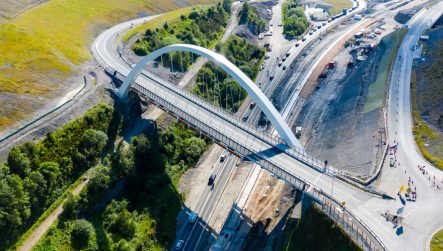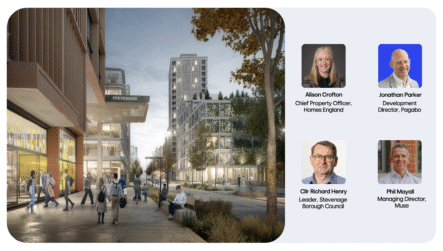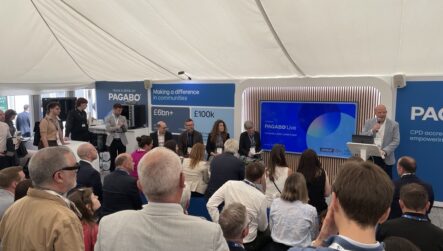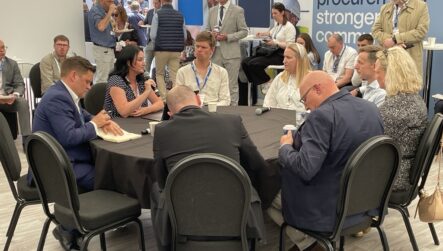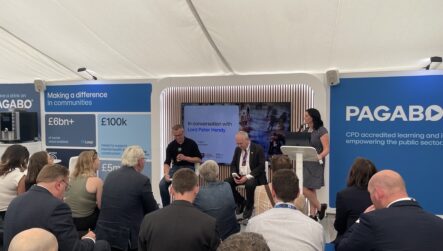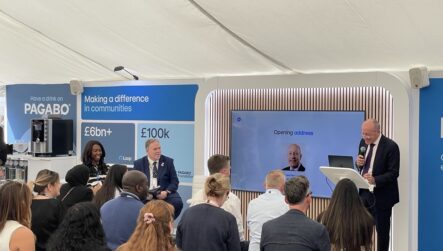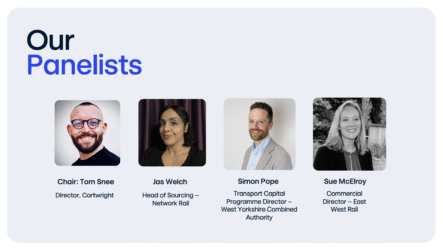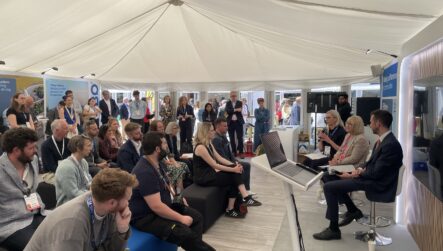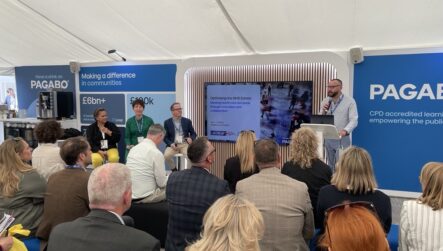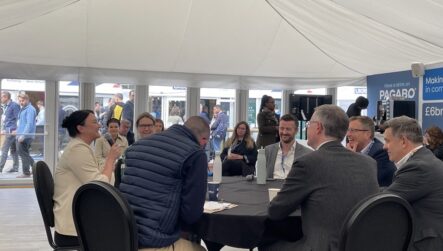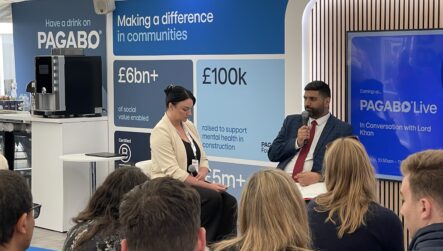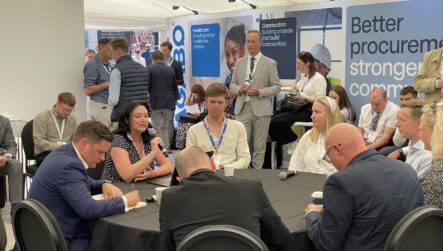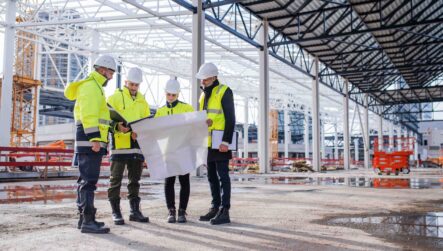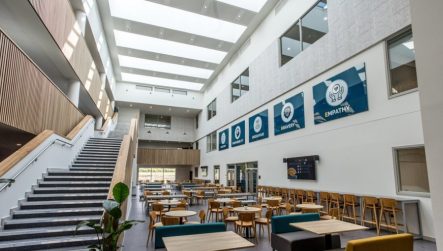Insight Report: Pagabo Live | Decarbonising your Estate Through Effective Estates Management

What do furniture and artificial intelligence have in common? Not only are they both considerations within an effective estates management plan to tackle decarbonisation, but they were also both mentioned within our latest instalment of Pagabo Live on the same topic.
Our panel of experts included Cast Interiors’ Group Construction Director, Steven Gayle, AIS Interiors’ Head of Furniture, Matt Osbourne, and Constructive Thinking’s CEO, Jon Moorhouse. Pagabo Live’s regular host, Tom Snee of Cartwright Communications, facilitated the interactive session and continued our mission to promote public sector knowledge.
Key talking points included government targets and funding, the debate surrounding sustainability and cost, optimal retrofit strategy and whole life costing, sustainability goals and how furniture makes a difference, as well as how technology can be utilised to monitor decarbonisation.
When it comes to estates and how best to decarbonise them, there are so many options and things to be considering – and for many this can be overwhelming or mean there are gaps where greater results can be gained. At the head of the session, we tested how the audience felt about their awareness of the different ways to decarbonise their estate through effective estates management. That figure came in at 47% feeling aware or very aware – but by the end of the session this figure shot up to 91%.
You can watch the full episode online and hear every bit of insight shared. For a summary of the discussion, look no further and keep on reading.

Targets and funding
Jon kicked things off by summarising the essential things to know about the government’s net zero targets and what decarbonisation funding is available to the public sector to support the effort.
While we don’t know how exactly the government defines net zero in relation to its 2050 target, we do know that the built environment currently accounts for 17% of total emissions in the UK – so there is room for improvement.
Given there are various funding options available to the public sector, Jon highlighted some of the key ones – such as the Public Sector Low Carbon Skills Fund – and explained that each fund should increase learning and make deliverability easier in the future. Before moving on, a warning was given to make it clear that funding bids are not easy, but there are ways to receive advice and support from government partners to put together the best bid possible.
Net zero planning
Another audience poll revealed that 39% of attendees feel unconfident or very unconfident in their understanding of their organisation’s net zero strategy, showing that a lot of organisations need to not just set their strategies and plans, but involve their staff as part of the journey and effort.
Thankfully, Steven was on hand to share some of his key advice on how the public sector can plan for net zero. One such example is using the PAS 2038 framework, which aims to improve the energy efficiency of our existing non-domestic building stock, reduce energy demand, and decarbonise building services. With many public sector buildings being difficult to decarbonise due to their age, the importance of using the framework to assess and strategise before implementing retrofit techniques is heightened.
Steven also highlighted the benefits of appointing an experienced project team, working collaboratively and flexibly, and identifying synergies between interventions through thorough planning.
Last but not least, early engagement between public sector organisations and the retrofit market was promoted by Steven and Jon, to enable benefits including access to dedicated specialists, reduced project risk, alignment on outcomes and expectations, and less disruption on live sites.
Sustainability and cost
Bringing his experience to the table, Matt highlighted that there is still a clear issue with perceptions in certain areas. Public sector clients often still think that sustainability efforts are expensive and will mean paying more for products. However, this is not strictly true – especially when long term value and whole life cost is considered.
Steven backed up this point, explaining there are many clever ways to make a sustainability strategy cost effective. One way to do this is by opting for light retrofit interventions first, which can still lead to a significant carbon reduction. When considering heavy retrofit interventions, it’s essential that experience and expertise is utilised to achieve specific goals while playing well with both budgets and the wider picture.
Despite this way of thinking, a poll later in the session revealed 87% of attendees have experienced price taking precedent over decarbonisation goals when procuring projects.
The sustainability vs cost debate is set to rumble on.
Retrofit strategy
Every retrofit strategy will be unique, but Jon shared a host of advice every organisation should consider when looking at their estate. The process must start with asking yourself why you want to complete retrofit measures – for example, is it to support the government’s net zero targets, to meet the needs of building users, or to contribute to your own ESG pledges?
Mapping out the buildings – along with their make-up, opportunities and limitations – within your estate is also key. You need to know the current state of play to understand where you can get to, and crucially, what success should look like.
There are many other steps that should be taken within the retrofit strategy process, but one that cannot be forgotten is to keep repeating the entire process. Strategies should not be static. They must constantly evolve and work efficiently alongside other plans like building maintenance.
Furniture
Though it may seem a small part of the estate decarbonisation jigsaw, trends show that the importance of furniture is increasing – and indeed several questions were posed to the panel on the topic.
Focussing on workplaces, Matt shared that he believes fit out furniture spend has roughly doubled following the pandemic. This is due to the rising focus on ergonomics and workplace wellbeing. With furniture accounting for 30% of the carbon in an office fit out, there is a balance to be found between sustainability, the needs of building users, and pure aesthetics. Some of Matt’s best advice to procure the best solutions is to reuse where possible, and to engage with experts on accreditation assessments to work out what you want to achieve and how you are going to manage it.
This section of the webinar also explored whether splitting out furniture, fixtures and equipment packages from main construction procurement can drive better value. Matt and Steven weighed in, giving their perspective on project packages, financial value and the different procurement routes available.
Technology
The final topic to tackle was how technology can be used to track decarbonisation.
Jon spoke about the importance of technology in monitoring and automation. Using technology for these purposes can reveal whether retrofit efforts have worked and can offer the opportunity to make improvements in the future.
Matt highlighted there is opportunity to make BIM work harder. For example, combining building data with asset tracking software can make maintenance easier, which will reduce manufacturing where possible and the associated embodied carbon. By increasing insight, we can reduce effort and waste.
Steven rounded off the interesting discussion by mentioning artificial intelligence and how this can change the way we work for the better. Instead of manually handling data and encountering human error, AI can make building decisions smarter and quicker in the future.
On the minds of our audience
A couple of questions from attendees were answered to conclude the session. This first was on whether decarbonisation projects differ in occupied and unoccupied buildings. Steven stepped in to explain that they do differ. With occupied buildings, planning and stakeholder consideration is much more intense. The advice was to compartmentalise the project, to reduce potential conflict.
Curious about industry sentiment, the panel was asked how the retrofit market is feeling about the new Labour government’s net zero focus. Jon responded, saying that most are confident there will be enough funding to build knowledge, support supply chain growth and invest in new technology. He also predicted that net zero targets will remain ambitious under Labour, with government advice and support to be accessible.
As this summary shows, decarbonising your estate through effective estates management is a complex process with lots of considerations to be made. However, there are lots of opportunities to quickly make a difference and contribute to a more sustainable future. We hope Steven, Matt and Jon have all given you something to think about next time you’re planning changes to your estate.
Don’t forget, you can watch the full episode online here.
The next episode of Pagabo Live will take place on 18 September at 3pm, which will focus on decarbonisation of public sector leisure facilities. Register here.
Discover our frameworks

